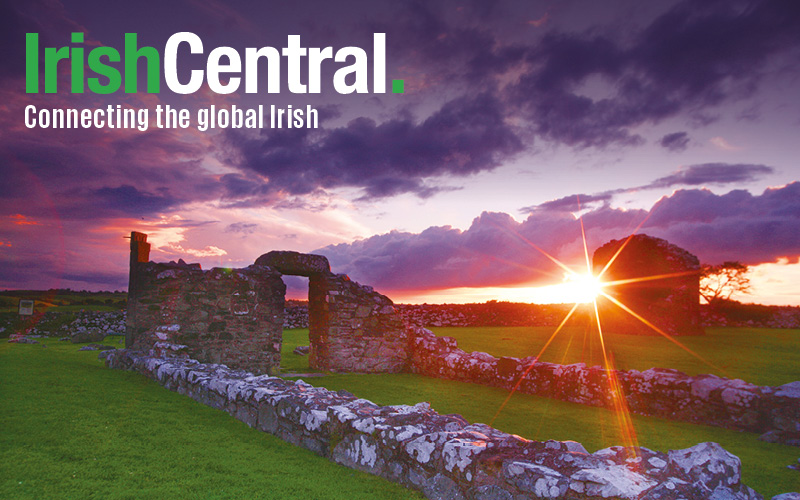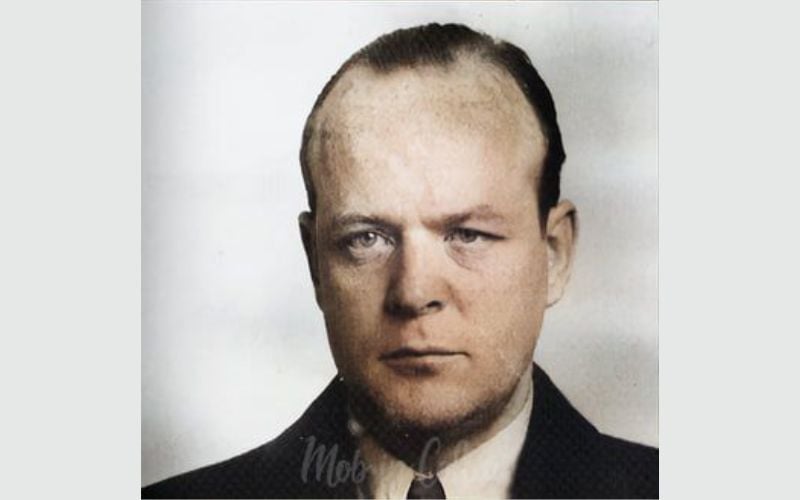| Atlantic Steps have a barrel of fun in Dublin, Ohio |
Incorporated just a year earlier as a city on the outskirts of Columbus, the namesake town sought to further connect with the Emerald Isle and establish a music festival that would enhance an already existing Irish dancing feis.
Perhaps portending an ambitious future, the musical guests that first year were the top-shelf traditional music group the Chieftains, who blazed many a trail in Celtic music over the years.
Over the past quarter century the reputation of the Dublin Irish Festival has followed a multifaceted approach to bringing our Celtic heritage to a much wider audience in the Midwest.
And in August of this year the Dublin Irish Festival celebrated 25 years. It ranks as one of the largest Irish festivals in the U.S., and is one of the jewels of the well-organized and entertaining events that dominate the American festival scene in the Midwest.
Though I have been hearing about the Dublin Irish Festival for over 15 years following its annual talent lineups, I had never made it out there so the silver anniversary encouraged me to undertake the journey this year.
For the festival’s first five years it was organized by a volunteer committee. For the past two decades the City of Dublin has assumed the major organizational responsibility for its administration and execution as it became one of the largest events on its annual calendar filling up the 27 acres of Coffman Park on the first weekend of August.
Considering the fact that this festival has approached six figures in attendance in the past for its three-day weekend, knowing that you have civic oversight for planning, health and safety issues is a huge advantage.
When all the hotels fill up around Dublin, its draw and importance for cultural tourism is significant for the area which prides itself as being “like Ireland, except smaller.”
When looking at the myriad festivals on the Celtic scene, the strength and variety of artists on offer is usually the first criterion for me to consider if it’s worth the journey when a road trip is required, and in recent years the mix has been exceptional and pace-setting in Dublin.
Also, the rave reviews from musicians of all stripes and styles are a very good indication that a festival is on the right track as an entertainment destination whether you are a performer or a listener.
The buzz and keeping track of hot bands and innovative acts goes into the recruitment process and produces a range of talent that is also blended with local artists who perform music, as well as the established dancing schools in the area.
A hallmark of a well-designed festival that offers 32 hours of onsite programming rewards the multigenerational throng with a host of activities besides the big stage shows.
Imaginative and creative tents pepper Dublin’s extensive Coffman Park pathways with all kinds of informative cultural exhibits or more intimate workshops. The festival’s approach to spotting these offerings all throughout the festival site affords better access and diversion as you trek from featured acts on the larger stages, and is in contrast to what sometimes is referred to as a culture ghetto, only for the cognoscenti and often placed on the outer limits.
It makes for more of an Irish village atmosphere throughout, as well as a welcome rescue from the heat and humidity -- and at times liquid sunshine -- of an August summer day like on Saturday of this year when your energy could be sapped by the oppressive temperature.
This year 15 percent of the approximately 85,000 people clocked came from out of Ohio according to festival director Alison LeRoy, who leads the team of Dublin City employees and 1,400 or so volunteers in the annual affair. Around 65 acts filled out 300 scheduled events at the well-sponsored and attended festival this year.
Like any great festival, there is way too much to see and do so everyone chooses what appeals to them most and makes the hard choices given their stamina and timing, but the Dublin fest lays it all out carefully, with plenty of food choices and merchandise vendors to help shorten the road and pleasure the journey.
No surprise to readers of this column, but the artists tacking to the traditional music genre kept me occupied most of the two days that I was able to attend this year.
It is always fascinating to see acts that you may be familiar with work in different settings like Dublin, where the stages are well-suited for their talents to shine and the carnival atmosphere outside the tents reduced for better listening with competent sound engineers.
It was a real pleasure to see groups like Slide, Eileen Ivers and Tannahill Weavers over the weekend mesmerize their audiences as crowd favorites. Dublin (the other one) singer Niamh Parsons is a familiar voice at the festival along with her partner Graham Dunne, who knows how to tame a large festival audience as well as a smaller café crowd to get maximum listening attention.
Of special note to me over the weekend were two acts that I was anxious to see for different reasons. Traveling over from Ireland for a one-time appearance were T With the Maggies, the quartet with Donegal ties and individual careers who came together in the past couple of years as a performing ensemble.
Sisters Triona and Mairead ni Dhomhnaill, Moya Brennan and Mairead ni Mhaonaigh all have voices that have established each of them as quintessentially Irish, but their common ancestry and mastery of the Irish language also made them standout.
Their harmony and song selections featured some of the most recognizable songs from their respective canons, but also new work like “Wedding Dress” featured as their finale piece and also on their self-titled CD produced by Manus Lunny who accompanied them in Dublin along with percussionist Jim Higgins.
Over the years John Whelan has been a festival favorite appearing with different stage and ceili bands. Seeing him this year with an expansive and very talented mix of musicians showed why he is not only such a popular performer, but one with his finger on the pulse of the tradition and upcoming talent.
Adding to a number of musicians, he has performed a lot with in the past like Tom Wettmore, Flynn Cohen, Liz Simmons, Lisa Gutkin, Matt Heaton and Christel Rice. He sprinkled his lineup with some younger performers like Cormac McCarthy, Kathleen Parke, Genevieve Gillespie and the irrepressible 10-year-old prodigy Haley Richardson from South New Jersey.
Loads of talent there which Whelan used to maximum effect all weekend long in lively sets of singing, dancing and musicality on stage (and their exploits back at the Crowne Plaza Hotel weren’t too shabby either).
Both the Whelan and T With the Maggies’ ensembles represented what is best about festivals like this that take chances based on past reputations and experience and allow for further innovation to shine through when introducing new concepts.
I also enjoyed the opportunity to take in shows by the Willis Clan from Nashville by way of Chicago, an unusual family group who do a lot of original material whom I heard about but saw for the first time.
They were about to embark on a tour of Ireland and even placed first in a unique ensemble competition called the Grupai Cheoil where they formed the core of the senior medal winners at the Cavan Fleadh Cheoil na hEireann.
The Dublin Irish Festival has held onto its love of Irish dancing, and there were ample opportunities to see and hear great dancers and dance music.
Brian Cunningham led his new percussive dance troupe Atlantic Steps featuring himself and sister Irene along with dancers Jackie O’Reilly and Kevin Doyle who have performed at the Catskills Irish Arts Week. Adding extra firepower were musicians Oisin Mac Diarmada, Brendan Begley and Stephen Doherty.
Always one of the most powerful stepdancing displays at the festival is the appearance of the Timm-Richens Academy of Irish Dance now led by John and Heather Timm of Ohio (founder Anne Richens passed away over a year ago) who can boast of the extraordinary senior men’s world champion in Michael Holland, a Dublin resident.
Ceili dancers were able to enjoy the superb music of the Old Bay Ceili Band from Maryland along with dancer teacher Jim Keenan, who has plied the Dublin boards for many years as an early proponent of the DIF.
Along with the Milwaukee Irish Fest and the Kansas City Irish Festival, the Dublin Ohio Irish Festival is a top-tier festival for any aficionado of the form leading not only by example but in imagination and scope and worthy of further imitation back east.
Next year the Dublin Irish Festival will be August 2-4, and you can follow its progress at www.DublinIrishFestival.org.




Comments